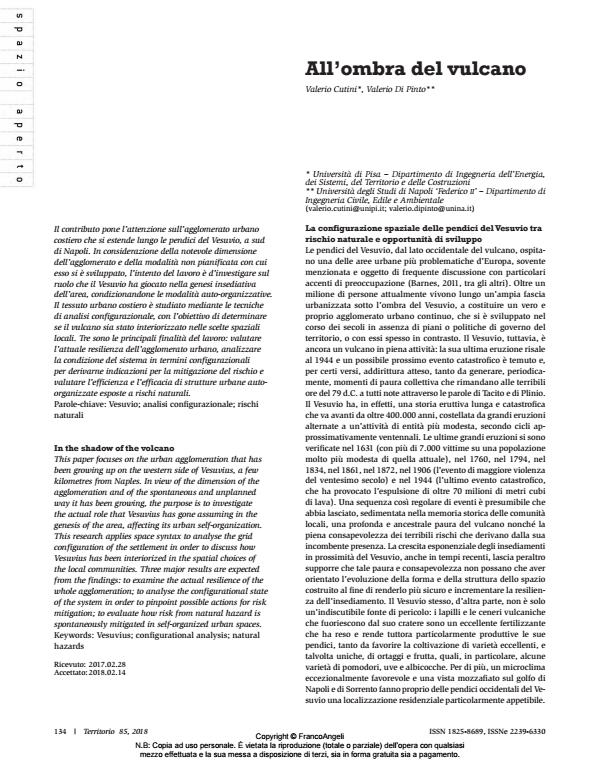All’ombra del vulcano
Titolo Rivista TERRITORIO
Autori/Curatori Valerio Cutini, Valerio Di Pinto
Anno di pubblicazione 2018 Fascicolo 2018/85
Lingua Italiano Numero pagine 14 P. 134-147 Dimensione file 1845 KB
DOI 10.3280/TR2018-085016
Il DOI è il codice a barre della proprietà intellettuale: per saperne di più
clicca qui
Qui sotto puoi vedere in anteprima la prima pagina di questo articolo.
Se questo articolo ti interessa, lo puoi acquistare (e scaricare in formato pdf) seguendo le facili indicazioni per acquistare il download credit. Acquista Download Credits per scaricare questo Articolo in formato PDF

FrancoAngeli è membro della Publishers International Linking Association, Inc (PILA)associazione indipendente e non profit per facilitare (attraverso i servizi tecnologici implementati da CrossRef.org) l’accesso degli studiosi ai contenuti digitali nelle pubblicazioni professionali e scientifiche
Il contributo pone l’attenzione sull’agglomerato urbano costiero che si estende lungo le pendici del Vesuvio, a sud di Napoli. In considerazione della notevole dimensione dell’agglomerato e della modalità non pianificata con cui esso si è sviluppato, l’intento del lavoro è d’investigare sul ruolo che il Vesuvio ha giocato nella genesi insediativa dell’area, condizionandone le modalità auto-organizzative. Il tessuto urbano costiero è studiato mediante le tecniche di analisi configurazionale, con l’obiettivo di determinare se il vulcano sia stato interiorizzato nelle scelte spaziali locali. Tre sono le principali finalità del lavoro: valutare l’attuale resilienza dell’agglomerato urbano, analizzare la condizione del sistema in termini configurazionali per derivarne indicazioni per la mitigazione del rischio e valutare l’efficienza e l’efficacia di strutture urbane autoorganizzate esposte a rischi naturali.
Parole chiave:Vesuvio; analisi configurazionale; rischi naturali
Valerio Cutini, Valerio Di Pinto, All’ombra del vulcano in "TERRITORIO" 85/2018, pp 134-147, DOI: 10.3280/TR2018-085016